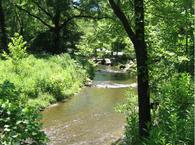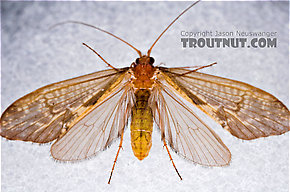
There are many types of aquatic insects but the four main orders of insects that interest trout fishermen are Mayflies, Caddisflies, Midges and Stoneflies. The student must be ready and able to differentiate between these insects, in their stages of development and their habitat. All the detail and variations are too numerous to cover in complete detail in a short class. However this class will serve as a quick guide to the identification of the insects and for greater detail the student will be guided to additional web sites at the conclusion of the class.
There are many types of aquatic insects but the four main orders of insects that interest trout fishermen are as follows: Ephemeroptera - mayflies, Plecoptera - stoneflies require good water quality - name means braided wings, Diptera - Midges have a single pair of wings, and Trichoptera - caddisflies moth like, also called Sedge.
Mayfly Duns: 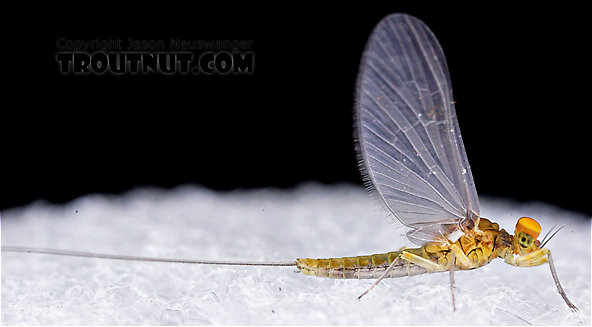
- Mayflies will always have a pair of large opaque wings that are in an upright position making them appear like tiny sail boats. Most will have a second much smaller pair of wings just behind the big pair. Note that they are the only aquatic insect with upright wings!
- They generally have three tails that are approximately the length of the body but some species have two tails.
- Their bodies are round.
Mayfly Nymphs: 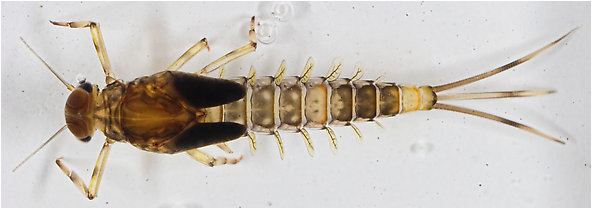
1. Nymphs are smaller than the duns and vary in size as they grow and molt. Sizes range from 3mm to 36mm.
2. They have 3 tails but some species have two tails.
3. Gills emanate from the sides of the middle segments and the abdomen as well.
4. Color ranges from lighter of tan to almost black with lighter undersides.
Mayfly Spinners: 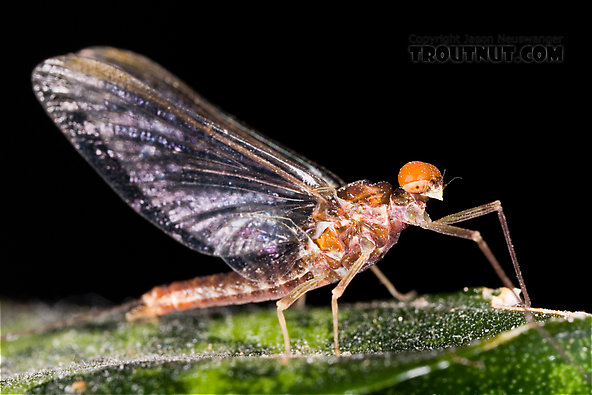
- Spinners are brighter in appearance than the duns.
- Tails are twice as long as the tails of a dun or approximately twice the length of the body.
- Wings are clear transparent, not opaque like the duns.
Caddis Fly Adults; 
- They always have 4 equal size wings covered with hair that lay flat in a V over their backs.
- They are small.
- They have long antennae and three pairs of legs.
- There are 5 main colors including tan, gray, olive, cream and brown.
Caddis Fly Larva: 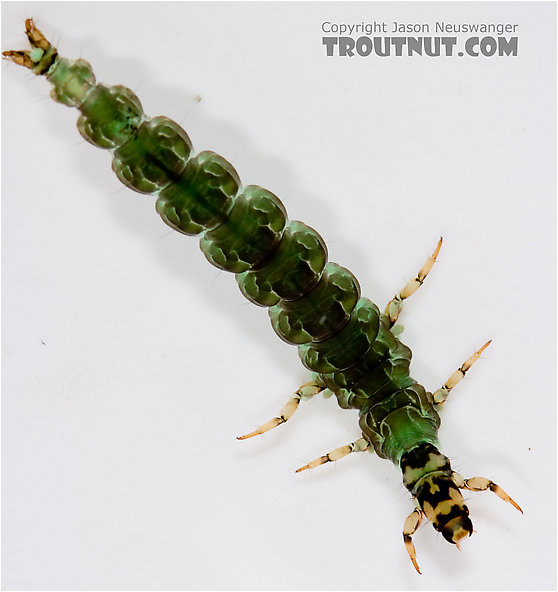
- About 70 % are net spinners, but some larvae exist in a case constructed of sticks, leaves, stones, etc. while others are free living.
- Their antennae are very minute.
- No real legs.
- They have two prolegs (hooks) extending from their body.
- Body is segmented.
Caddis Fly Pupa: 
- The pupa is smaller than the larva.
- Have the appearance of being half larva and half adult with hairy abdomen..
- Head, thorax and wings are clasp together on sides.
- Smaller antennae that may be swept back.
- Curved mandibles which project forward from the front of the head.
Midge Adults; 
- Two short wings that are shorter than their body.
- Wings remain flat on top of their bodies.
- Second pair of wings are halteres, and have not developed as wings.
- They have no tails.
- Very small hook size 22 thru 28.
Midge Larva: 
- No tails
- Segmented body.
- Tiny antennae.
Midge Pupa: 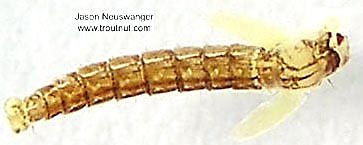
- Head, wings and thorax are io a clump.
- 2 gill fibers are on the top or the thorax.
Stonefly Adult: 
- Two tails.
- Gills located on or behind each leg but are not visible.
- Four equal veined wings held flat over their top when not flying.
- Long antennae.
- Large size #2 hook thru #20.
Stonefly Nymph: 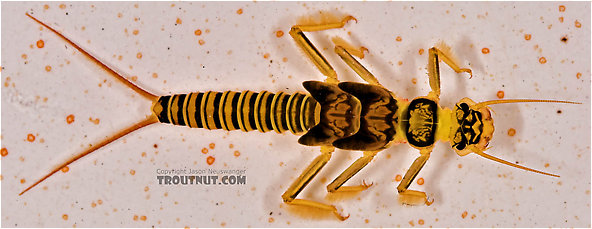
- Two claws on each of the 2 short legs.
- Two short tails
- May have gills on the thorax.
- Long antennae.
- They require cold clear water with high dissolved oxygen.
Refer to Blog "Identifying Aquatic Insects and Selecting the Correct Fly" at TroutU.
For more specifics about Mayflies refer to Class 301 "Introduction to Mayflies".
More about matching the hatch Class 3021 "Correctly Matching the Hatch"
Recommended DVDs to assist your understanding:
Mayflies - Fly Fishing Guide to Imitating Aquatic Insects
Stoneflies - Imitating Aquatic Insects
Tying Perfect Mayfly Emergers, Duns, and Spinners
The old adage "A picture is worth a thousand words" is certainly true when describing aquatic insects and I know of no better pictures than those created by Jason Neuswanger at TroutNut. By the way he has over 3700 beautiful pictures on that site.
Aquatic Insect Recognition is another useful site brought to you by Flyfishingentomology.com




